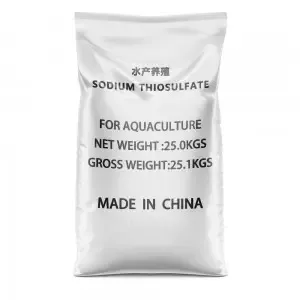



Two Common Chemicals for Effective Water Disinfection and Purification
Two Chemicals Used to Disinfect Water
Water disinfection is a critical process in ensuring the safety of drinking water and preventing waterborne diseases. Among the various methods and chemicals available for disinfecting water, chlorine and ozone are two of the most prominent. Each chemical has its unique properties, advantages, and limitations when it comes to water treatment.
Chlorine The Traditional Disinfectant
Chlorine has been used for over a century as a primary disinfectant in water treatment. It is effective in killing bacteria, viruses, and some types of parasites. Chlorine works by penetrating the cell walls of microorganisms and disrupting their metabolic processes, ultimately leading to cell death. This chemical possesses several advantages that make it a popular choice among water treatment facilities.
One of the main benefits of chlorine is its residual effect. After chlorination, a small amount of chlorine remains in the water, providing ongoing protection from recontamination as the water travels through pipes to consumers. This residual effect is especially important in large distribution systems where some pathogens may enter after treatment.
Additionally, chlorine is relatively inexpensive and easy to handle, making it accessible for many municipalities and water treatment facilities. It can be applied through various methods, including gas, liquid, or solid forms, allowing for flexibility in treatment processes.
However, the use of chlorine is not without drawbacks. One significant concern is the formation of disinfection by-products (DBPs), such as trihalomethanes (THMs) and haloacetic acids (HAAs), which can occur when chlorine reacts with organic matter in water. Some of these by-products have been linked to health risks, prompting regulatory agencies to set limits on their concentration in drinking water. Additionally, chlorine’s effectiveness can diminish in the presence of certain contaminants, including ammonia, which can combine with chlorine to form chloramines that may not be as effective as free chlorine.
name two chemicals used to disinfect water

Ozone The Powerful Oxidizer
Ozone is another powerful chemical used to disinfect water, recognized for its strong oxidizing properties. Unlike chlorine, ozone is a gas that is generated on-site and must be used immediately, as it has a relatively short half-life. Ozone works by breaking down the cell walls of microorganisms, effectively inactivating bacteria, viruses, and protozoa.
One of the major advantages of ozone is its ability to effectively eliminate a wider range of pathogens compared to chlorine. It is particularly effective against viruses and protozoan cysts, such as Giardia and Cryptosporidium, which are resistant to traditional disinfection methods. Moreover, since ozone decomposes back into oxygen after use, it leaves no toxic residues or environmental concerns like DBPs.
Despite these advantages, ozone also has limitations. Its short lifespan means that it does not provide a residual effect, which can be a disadvantage in water distribution systems where protection from recontamination is necessary. Additionally, the generation of ozone requires specialized equipment and constant monitoring, leading to higher operational costs compared to chlorine.
Conclusion
In summary, chlorine and ozone are two vital chemicals employed in the disinfection of water, each with its unique strengths and challenges. Chlorine remains the traditional disinfectant due to its cost-effectiveness and residual protection, while ozone is gaining recognition for its powerful disinfection capabilities and absence of harmful by-products. The choice between these chemicals often depends on the specific contamination challenges faced by water treatment facilities, highlighting the importance of selecting the most suitable disinfectant to ensure the safety of water for public consumption.
-
Why Sodium Persulfate Is Everywhere NowNewsJul.07,2025
-
Why Polyacrylamide Is in High DemandNewsJul.07,2025
-
Understanding Paint Chemicals and Their ApplicationsNewsJul.07,2025
-
Smart Use Of Mining ChemicalsNewsJul.07,2025
-
Practical Uses of Potassium MonopersulfateNewsJul.07,2025
-
Agrochemicals In Real FarmingNewsJul.07,2025
-
Sodium Chlorite Hot UsesNewsJul.01,2025










